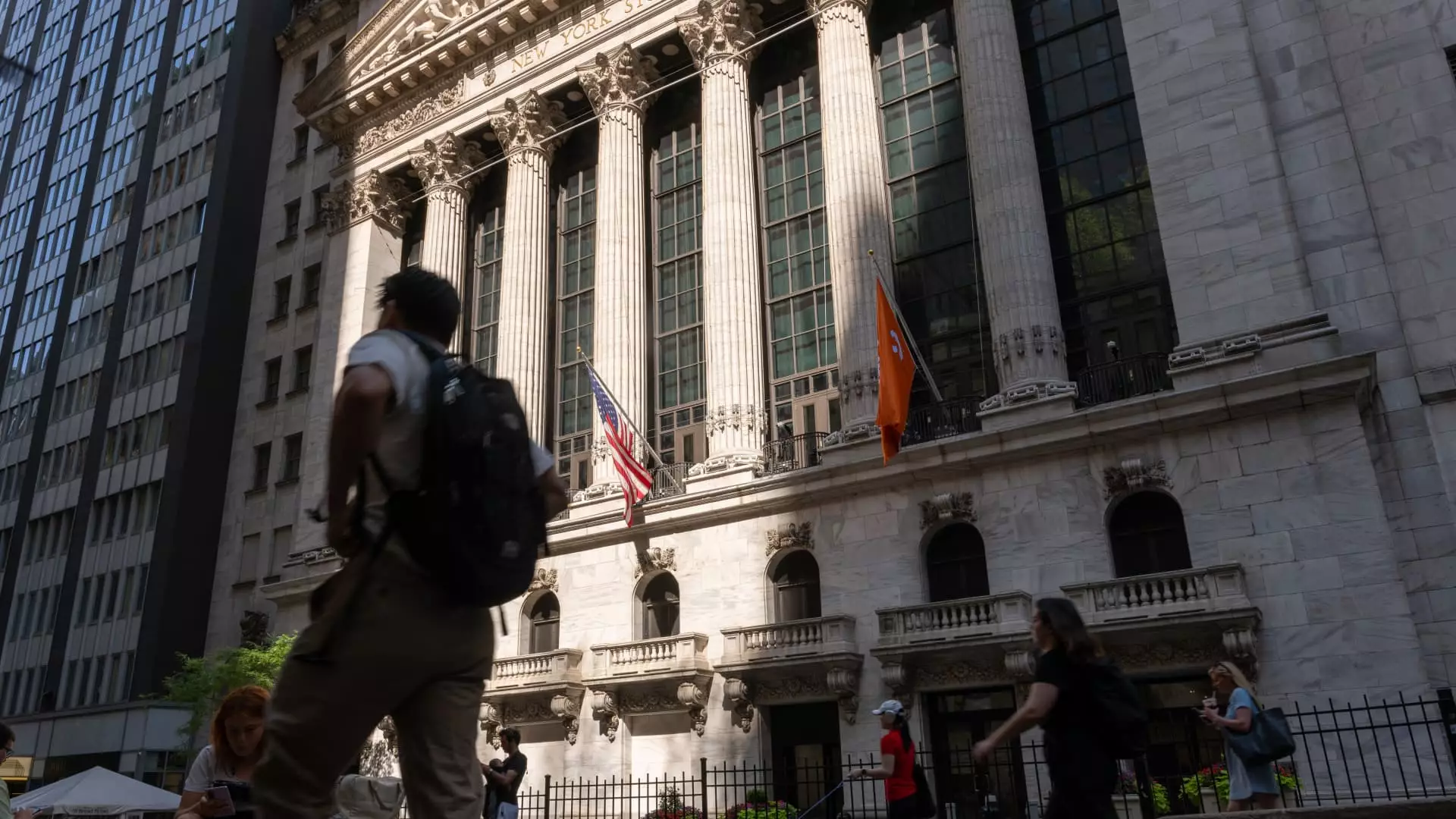The vibrant optimism that once coursed through Wall Street’s deal-making culture faced a significant setback not long ago. The Trump administration’s sweeping tariff policies sent shockwaves through the market, creating an inhospitable environment for mergers and acquisitions (M&A). Initially, this year had brought a robust flurry of activity, bolstered by pro-business rhetoric and a deregulatory spirit that set the stage for ambitious growth. However, as tariffs spiraled into effect, volatility quickly froze the zealous momentum that had so recently marked the beginning of the year.
In the pre-tariff era, dealmakers danced with hope, fueled by an easing of inflation worries and a generally conducive climate for business growth. The expectation was clear: 2025 could herald a revitalized M&A landscape. But reality struck hard as tariffs were levied, causing a chilling drop in activity, eventually leading to a staggering 66% decline in U.S. deal value in the immediate aftermath.
For anyone interested in the anatomy of the market, this sudden deceleration serves as a stark reminder of how interconnected policies and global economic conditions are. It reiterates how a single policy decision can derail otherwise enthusiastic markets.
The Resurgence of Dealmaking: Signs of Recovery
Yet, it seems the ecosystem of mergers and acquisitions is displaying signs of resilience and recovery. Recent reports suggest that following the initial tempering from tariff-induced uncertainties, deal-making is bouncing back with vigor. Analysts have noted an encouraging uptick in activity, with large deals surfacing across industries such as technology and telecommunications.
Critically, figures indicate that after the gloom in April, activity surged back in May, with over 300 transactions amassing a staggering collective value of more than $125 billion. These developments hint at an appetite that has not been extinguished but rather put on hold—an assertion supported by Kevin Ketcham, a prominent analyst in the M&A field. His observations underscore that clarity in trade policies is easing the market’s jitters, indicating a cautiously optimistic outlook.
Furthermore, the ongoing monitoring of borrowing costs remains essential. If these costs are kept within reason, we could very well be on the threshold of a vibrant recovery. The anticipation of a wave of favorable M&A transactions signals a landscape where aggressive growth strategies could still take root, contingent upon market stability returning.
Shifting Strategies: Embracing Special Situations
Looking ahead, private equity insights suggest a lean towards so-called “special situations” M&A activities—transactions characterized by motivated sellers, which offer flexibility in structure and terms. This pivot reflects deeper market realities, notably the increased financing costs associated with rising bond yields. Higher rates drive up the expense of money, impacting asset valuations adversely; hence, small to mid-sized deals may gain traction as they are generally less prone to complex regulatory scrutiny.
Charles Corpening, the chief investment officer at West Lane Partners, points out that these niche transactions may quickly populate the M&A pipeline. Investors are anticipated to gravitate toward more elementary dealings—those that are easier to navigate in what remains a volatile market. Such strategic maneuvering not only aligns with the need for immediate recovery but also paves the way for more complex deals down the road once there is adequate market stability.
Major Transactions and Adaptive Corporate Behavior
The past few months have already witnessed substantial transactions that signify a shift in corporate strategies in response to the turbulent environment. High-profile deals such as the acquisition of Constellation Energy by Calpine and Walgreens’ partnership with Sycamore Partners exemplify this trend, highlighting both ambition and adaptation among key players.
Moreover, corporations like Kraft Heinz are redefining their growth strategies. Rather than retreating from the M&A landscape, they are exploring potential acquisitions and divestitures within their portfolios to ensure competitiveness in the evolving market. This willingness to adapt in a challenging context raises interesting questions about resilience: can companies weather the storm while simultaneously refining their market positions?
As the dust settles, and as we watch the M&A landscape evolve amidst ongoing economic fluctuations, the resilience exhibited by corporations in wording their strategies marks a new chapter. The emotional irony of a marketplace once put to a standstill now gearing up for a chase after opportunity illustrates just how dynamic and adaptable industry leaders can be in the face of adversity.
With the promising ascent of M&A activities, one can only hope it leads to more visionary partnerships and innovations that will foster healthy competition and sustainable growth in the years to come.

